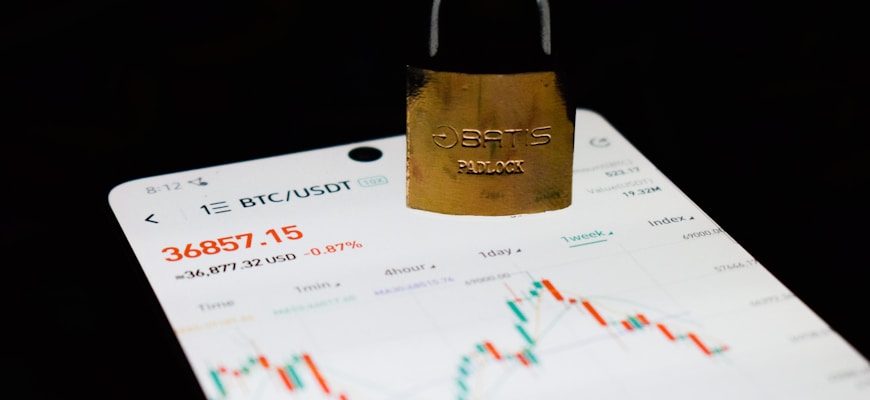How Regulatory Changes Impact Crypto Security

- Introduction to Regulatory Changes in the Crypto Industry
- Understanding the Relationship Between Regulations and Crypto Security
- Exploring the Latest Regulatory Developments in Cryptocurrency
- Challenges Faced by Crypto Security in the Face of Regulatory Changes
- The Role of Compliance in Enhancing Crypto Security Measures
- Future Implications of Regulatory Changes on the Security of Cryptocurrencies
Introduction to Regulatory Changes in the Crypto Industry
The crypto industry is constantly evolving, and regulatory changes play a significant role in shaping its landscape. These changes can have a profound impact on the security of crypto assets and the overall stability of the market. It is crucial for investors, traders, and other stakeholders to stay informed about the latest regulatory developments to ensure compliance and mitigate risks.
Regulatory changes in the crypto industry can encompass a wide range of measures, including licensing requirements, anti-money laundering (AML) regulations, and investor protection rules. These changes are often aimed at promoting transparency, accountability, and security within the crypto ecosystem. By adhering to these regulations, businesses and individuals can help build trust and legitimacy in the industry.
One of the key challenges posed by regulatory changes in the crypto industry is the need for adaptability and flexibility. As regulations evolve, companies and individuals must be prepared to adjust their practices and procedures accordingly. Failure to comply with regulatory requirements can result in severe penalties, including fines, sanctions, and even criminal prosecution.
Despite the challenges, regulatory changes can also bring opportunities for innovation and growth in the crypto industry. By creating a more secure and stable environment, regulations can attract new investors, foster partnerships with traditional financial institutions, and pave the way for mainstream adoption of cryptocurrencies. Ultimately, regulatory changes are a crucial aspect of the maturation of the crypto industry and can help ensure its long-term sustainability.
Understanding the Relationship Between Regulations and Crypto Security
Understanding the correlation between regulations and crypto security is crucial in the ever-evolving landscape of cryptocurrency. Regulations play a significant role in shaping the security measures implemented by crypto platforms and exchanges. Compliance with regulatory requirements is essential to ensure that the security protocols are up to date and effective in protecting users’ assets.
Regulatory changes can have a direct impact on crypto security practices. For example, new regulations may require additional security measures to be implemented, such as enhanced KYC (Know Your Customer) procedures or mandatory multi-factor authentication. These changes are designed to enhance the overall security posture of the crypto ecosystem and protect users from potential threats.
On the other hand, regulatory uncertainty or inconsistency can create challenges for crypto security. Without clear guidelines or standards to follow, crypto platforms may struggle to develop robust security protocols that comply with regulatory requirements. This can leave users vulnerable to security breaches and other malicious activities.
It is essential for crypto businesses to stay informed about regulatory developments and adapt their security practices accordingly. By proactively monitoring regulatory changes and implementing best practices, crypto platforms can enhance their security posture and build trust with their users. Ultimately, the relationship between regulations and crypto security is a dynamic and interconnected one that requires careful attention and proactive management.
Exploring the Latest Regulatory Developments in Cryptocurrency
The cryptocurrency landscape is constantly evolving, and with it, regulatory developments are emerging to keep pace with this rapidly changing industry. Staying informed about the latest regulatory changes is crucial for anyone involved in the crypto space, especially when it comes to ensuring the security of digital assets.
One of the key areas where regulatory changes impact crypto security is in the realm of compliance. Regulatory bodies around the world are increasingly focusing on enforcing compliance standards to prevent illicit activities such as money laundering and terrorist financing. By staying abreast of the latest regulatory developments, cryptocurrency users can ensure that they are following the necessary protocols to protect their assets from potential security threats.
Moreover, regulatory changes also play a significant role in shaping the overall security infrastructure of the cryptocurrency market. For example, regulations related to custody services and wallet management can have a direct impact on how securely digital assets are stored and managed. By understanding and complying with these regulations, users can mitigate the risk of security breaches and safeguard their investments in the long run.
In addition, regulatory developments can also influence the way in which cryptocurrencies are traded and exchanged. For instance, regulations around Know Your Customer (KYC) and Anti-Money Laundering (AML) requirements can impact the way in which exchanges verify the identities of their users and monitor transactions for suspicious activities. By adhering to these regulations, exchanges can enhance the security of their platforms and build trust among their user base.
Overall, exploring the latest regulatory developments in cryptocurrency is essential for ensuring the security of digital assets in an ever-changing landscape. By staying informed and compliant with regulatory requirements, cryptocurrency users can protect their investments and contribute to a safer and more secure ecosystem for all stakeholders involved.
Challenges Faced by Crypto Security in the Face of Regulatory Changes
One of the major challenges faced by crypto security in light of regulatory changes is the need to adapt to evolving compliance requirements. As governments around the world introduce new regulations for cryptocurrencies, security measures must be updated to ensure that they meet the latest standards. This can be a complex and time-consuming process, requiring crypto security professionals to stay informed about the latest regulatory developments and make necessary adjustments to their security protocols.
Another challenge is the potential for regulatory changes to create uncertainty in the crypto market, leading to increased volatility and security risks. When regulations are unclear or subject to frequent changes, crypto investors may become hesitant to participate in the market, leading to a decrease in overall security. In order to mitigate these risks, crypto security professionals must work closely with regulators to ensure that security measures are in line with regulatory requirements and that investors feel confident in the security of their assets.
Additionally, regulatory changes can also impact the ability of crypto security professionals to collaborate with other organizations in the industry. For example, if regulations require certain security measures to be implemented by all participants in the crypto market, it may be more difficult for security professionals to work with external partners who do not meet these requirements. This can create challenges in sharing information and coordinating security efforts, ultimately leading to gaps in overall security.
The Role of Compliance in Enhancing Crypto Security Measures
Compliance plays a crucial role in enhancing security measures within the realm of cryptocurrency. By adhering to regulatory requirements, companies can ensure that their operations are in line with legal standards, thus reducing the risk of security breaches.
One way in which compliance enhances security is through the implementation of robust KYC (Know Your Customer) procedures. By verifying the identities of users, companies can prevent fraudulent activities and reduce the likelihood of unauthorized access to funds.
In addition to KYC procedures, compliance also involves the implementation of AML (Anti-Money Laundering) measures. By monitoring transactions and flagging suspicious activities, companies can prevent illicit funds from entering the system, thus safeguarding the integrity of the platform.
Furthermore, compliance with regulatory standards can also help companies build trust with customers and investors. By demonstrating a commitment to following the law, companies can attract more users to their platform and enhance their reputation within the industry.
Overall, the role of compliance in enhancing crypto security measures cannot be overstated. By staying up to date with regulatory changes and implementing robust procedures, companies can protect their users and assets from potential threats, ultimately contributing to a safer and more secure crypto ecosystem.
Future Implications of Regulatory Changes on the Security of Cryptocurrencies
The future implications of regulatory changes on the security of cryptocurrencies are significant. As governments around the world continue to grapple with how to regulate this emerging asset class, there is a growing concern about the potential impact on the security of crypto assets.
One of the key concerns is that increased regulation could lead to a loss of privacy for cryptocurrency users. Many cryptocurrencies are designed to be anonymous and censorship-resistant, but stricter regulations could require users to disclose more information about their transactions, potentially compromising their privacy.
Additionally, regulatory changes could also impact the security of cryptocurrency exchanges. Exchanges are often targeted by hackers due to the large amounts of cryptocurrency they hold. Increased regulatory scrutiny could make it more difficult for exchanges to operate securely, potentially putting user funds at risk.
Furthermore, regulatory changes could also affect the development of new security technologies in the cryptocurrency space. Many innovative security solutions have been developed by cryptocurrency projects to protect user funds, but increased regulation could stifle innovation in this area, making it harder for users to secure their assets effectively.
Overall, the future of cryptocurrency security is closely tied to regulatory developments. It is essential for policymakers to strike a balance between protecting users and fostering innovation in the cryptocurrency space to ensure the security of this new asset class in the years to come.



